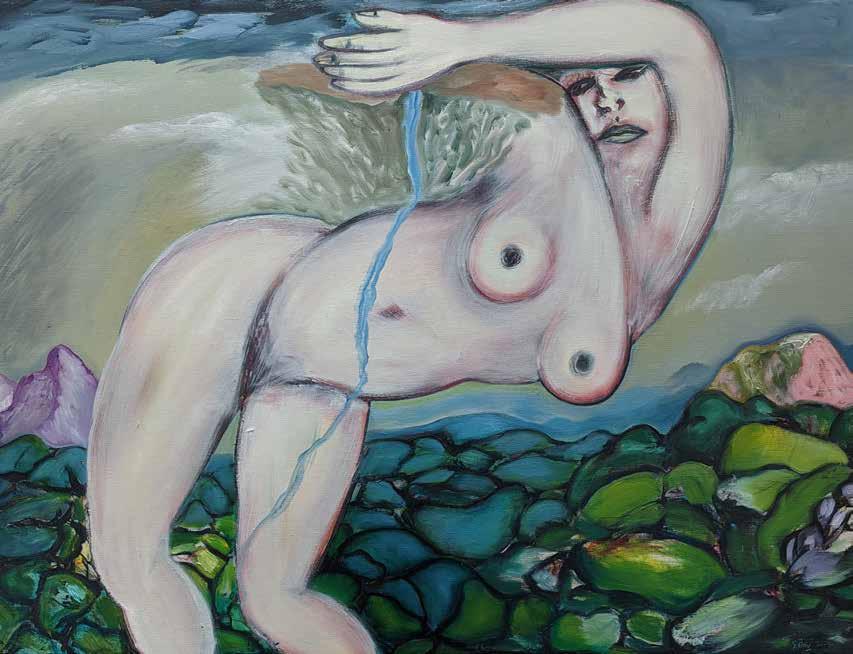
3 minute read
FINDING AFRICAN AMERICAN HISTORY IN DENMARK
By Dr. Ethelene Whitmire, Professor and Chair, University of Wisconsin -
Madison, Department of African American Studies
Advertisement
I WENT TO COPENHAGEN FOR THE FIRST TIME
ON A WHIM. My year-long sabbatical, a perk of being a tenured professor, was coming to an end and I wanted to do something exciting. I decided to spend the months of May and June 2010 abroad and selected Denmark because I was watching a lot of Danish films. I did not know anyone in the entire country, and I had never been. I fell in love with Copenhagen and returned repeatedly during many winter breaks and every summer since 2010, including a year as a Fulbright scholar, for a total of sixteen times. During the summer of 2013, I lived in the Nørrebro section of Copenhagen. I frequently took a shortcut through the Assistens Kirkegaard cemetery to the cafes on the trendy street Jægersborggade. Famous Danes such as The Little Mermaid author Hans Christian Andersen and philosopher Søren Kierkegaard are buried there. I noticed on the path back to my apartment a rather prominent headstone with the very non-Danish name of Ben Webster. I was surprised to discover that he was one of many African American jazz musicians who lived and were buried in Copenhagen. The graves of pianist Kenny Drew and trombonist Richard Boone are behind Webster in a special jazz section. Thad Jones, trumpet player and leader of a legendary Village Vanguard band, and drummer Ed Thigpen are buried side by side in another cemetery along with pianist Duke Jordan interred in a different section. That cemetery, Vestre Kirkegaard, is down the street from the prison where African American trumpet player and bandleader Valaida Snow claimed she was detained for two years during WWII by the Nazis during their occupation of Denmark. I had never heard about African Americans living in Denmark and was curious. I wanted to know why did they go to Denmark? What were their experiences while there? During my initial exploration I found two things that surprised me: the considerable number of African Americans, famous and unknown, who had significant experiences in Denmark, and the overwhelmingly positive nature of their journeys.
I discovered that African Americans, like Booker T. Washington, viewed Denmark as a utopia. Washington called it the happiest country in the world after his visit in 1910, long before it regularly topped the happiest country lists in the 21st century. In the beginning of the 20th century educators, civil rights activists, scholars, social workers, and union organizers went to Denmark to study the adult folk schools and cooperative movements for farmers. They hoped to create similar programs to help African American sharecroppers, tenant farmers, and members of the Great Migration. Although their primary reason for going to Denmark was to uplift the race, many also had a secondary motive—a sense of adventure and a respite from U.S. racism and segregation. In the second half of the century, African Americans went to Denmark for more individual reasons and began permanently living there. Artists and performers like jazz saxophonist Dexter Gordon and singer Ella Fitzgerald found financial and creative support for their work in Denmark. They also found romance. Many married Danes and started families— often second families for the frequently middle-aged jazz musicians or artist like Walter Williams. The writers, artists, and musicians also felt that the lack of racial discrimination created an atmosphere in Denmark that increased their productivity.
“Paris was a cliché,” said Pulitzer Prize winning poet Gregory Pardlo in his 2018 book, Air Traffic: A Memoir of Ambition and Manhood in America, when he explained his decision to go to Copenhagen. He said, “Copenhagen was my calling, and a hipper Promised Land than Paris for black intellectuals escaping the stifling air pollution of American racism.” My research expands the geographic boundaries of the ofttold tale of African Americans abroad. There are numerous books about African American expatriates in Paris including Langston Hughes, James Baldwin, Josephine Baker, and Richard Wright, to name just a few.
During the last several years, I used both American and Danish primary and secondary sources to research African American lives in Denmark. I also searched archives in the United States and in Denmark. I read historical African American newspapers (for example, Amsterdam News and the Chicago Defender) and Danish newspapers (including Politiken and Berlingeske Tidende) containing articles by and about African Americans in Denmark. I read articles in African American journals including the NAACP’s Crisis, Ebony, and Jet. I scoured scrapbooks, personal and professional correspondence, photographs, postcards, programs of cultural events, travel columns and essays, jazz records, paintings and prints, declassified FBI files detailing the activities of Black Panthers in Copenhagen and the Black Panther’s newsletter. I explored biographies, autobiographies, and memoirs. I interviewed the widows, children, and friends of the subjects in my book. I also interviewed the
IMAGES FEATURED: International People’s College in Helsingnør, 1930, (top two images)
Summer 2022 African American Expatriates in Denmark class at Frederiksborg Castle, (lower












